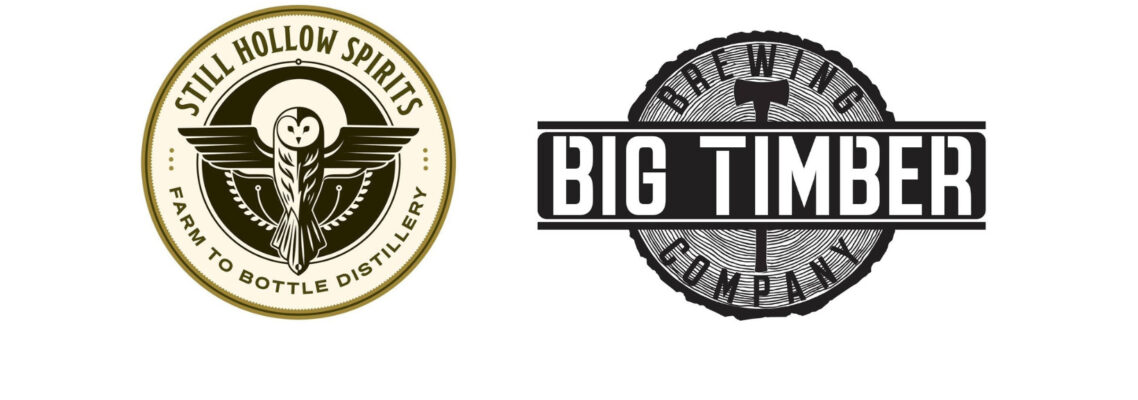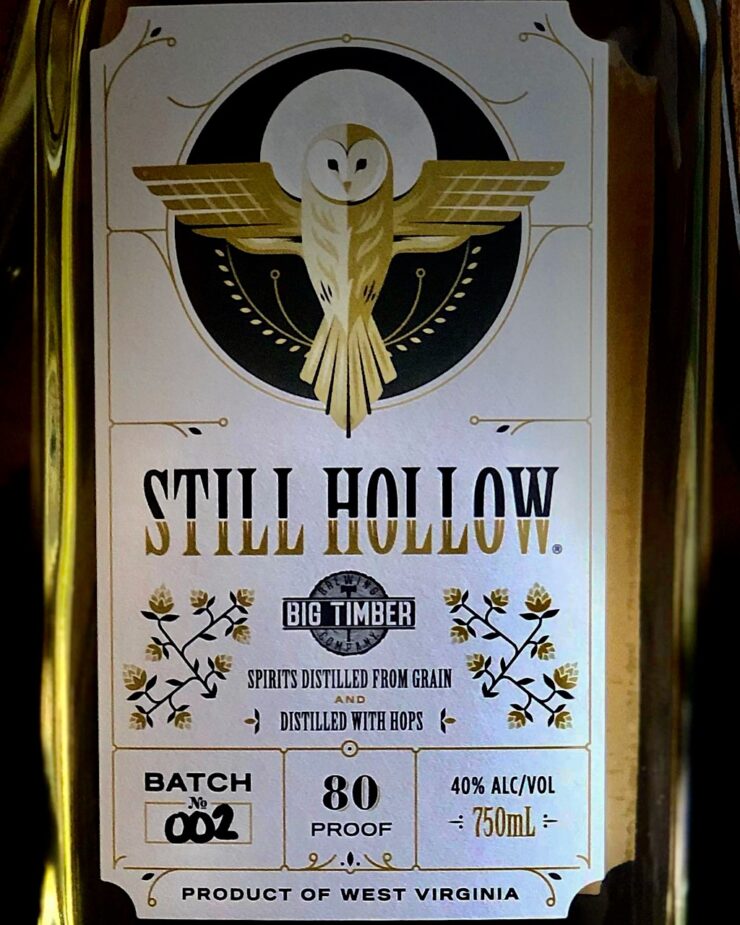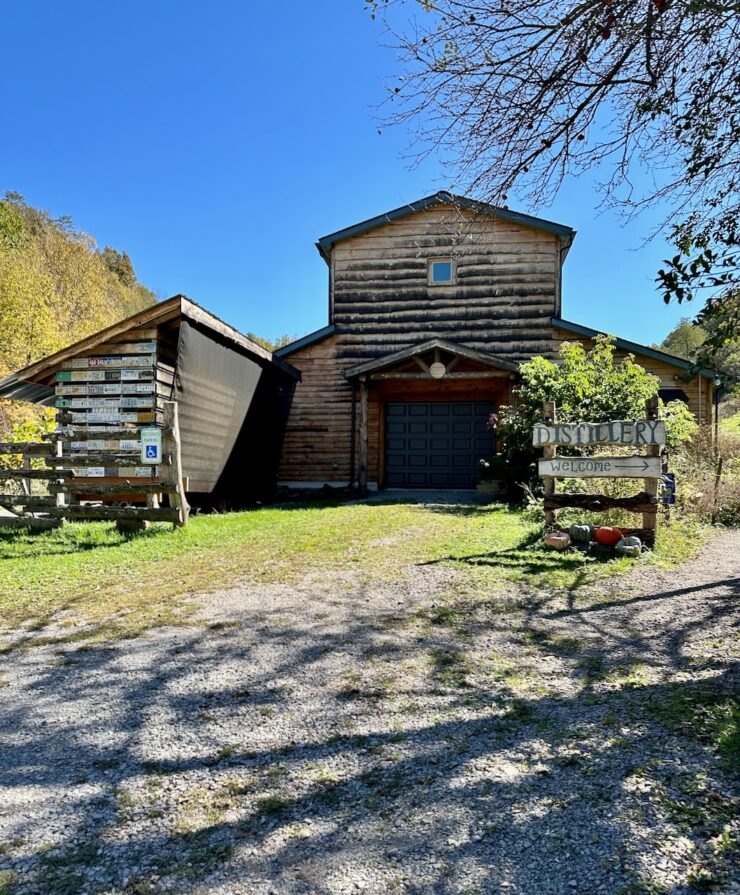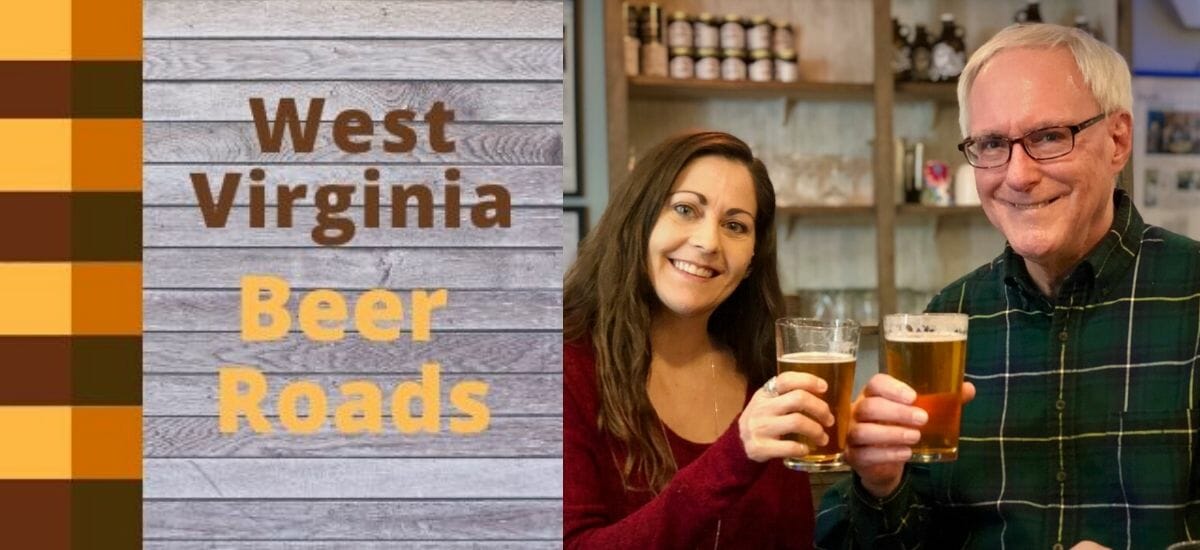
Making whiskey from craft beer
October 24, 2022
While one could contend that, technically speaking, all whiskey is made from beer, there is a West Virginia distillery that takes it one step further. It makes distilled spirits from local craft beer.
Still Hollow Spirits in Job, WV, is unique in that it has made specialty distilled spirits from beer produced by both Big Timber Brewing and Stumptown Ales. From our experience with this distillery, it is definitely worth a visit to try their products.

The West Virginia Beer Roads crew visited Still Hollow Spirits and Big Timber Brewing to get the full story of the collaboration spirit. This podcast contains two segments:
(1) First are interviews with Matt and Ashely Kwasniewski of Big Timber Brewing and Athey Lutz of Still Hollow Spirits to get the story of spirits made from craft beer.
(2) Second is an informative conversation with Athey Lutz to learn how he got started distilling and how his little farm distillery has developed into quite a tourist attraction.
Listen to the podcast
One person’s mistake, another’s opportunity
It is a fact in commercial brewing that every so often, something goes wrong in the brewing process, and a batch of beer doesn’t turn out right. Talk to brewers across the country and you’ll discover that this happens even at the best breweries. The question is: what do they do with the bad batch? Dumping it seems like such a waste.
Case in point comes from Matt Kwasniewski, proprietor at Big Timber Brewing, when a couple years back, a 30 barrel batch of Double Bit IPA had issues and the brewery decided it had to go.
“We could put it down the drain, but then it would go to the sewage treatment plant,” says Kwasniewski, and he preferred not to do that. So he called Athey Lutz, owner/distiller at Still Hollow Spirits, who jumped on the opportunity. “He came down in his truck, took the bad beer away, and made good whiskey from it.”
A distillery could always use a batch of beer from a brewery. It’s already been fermented and is loaded with alcohol just waiting to be distilled. Problem is, craft beer is way too expensive for a distiller to use as its distillation base. For a bottle of finished whiskey, they’d have to charge a whole lot more than the market would bear in order to make a profit. So to get craft beer at an affordable price, it’s no secret that a distillery has to be opportunistic. It has to be able to jump when a batch of out-of-spec beer becomes available.
Any off flavors in a batch of out-of-spec beer are rarely bad enough to affect the whiskey made from it. They are removed in the distillation process. The product that comes out of the still is less flavorful than the original beer because the distillation process pulls out and concentrates the alcohol while relatively lessening the other flavors. However, the distillate taken from craft beer will still retain some flavors from the beer’s malt and even more flavor from the hops.
In the case of making a distilled spirit from a Double IPA, which might be 8.0% alcohol by volume, the distillation process concentrates that alcohol to something like 60% to 75% ABV, depending on the style of whiskey the distiller wants to make. The higher the alcohol concentration from the still, the less flavorful the distillate will be. You can see how it could take 8 to 10 gallons of beer to produce one gallon of spirits.
A specialty spirits label

Even if all the grain in a craft beer is barley malt, a whiskey made from it can’t be labeled as a Malt Whiskey, mainly because it has hops added to it. U.S. whiskey regulations do not allow flavorings like hops to be in a malt whiskey or any product labeled as whiskey. If it contains hops or most other non-grain flavoring ingredients, a whiskey made from the craft beer must be labeled as a distilled spirits specialty. In Still Hollow’s product, they label it Spirits distilled from grain and distilled with hops.
The aging process

Most types of whiskey in the U.S. are required by law to be aged in barrels for some length of time, although this aging time can often be quite brief. Barrel aging mellows the spirits and adds or develops other flavors in it.
Still Hollow Spirits’ aging time varies quite a bit by the size barrel they use. Smaller barrels (for instance a 10 gallon one) have a much higher surface to liquid ratio and, therefore, age whiskey much faster than a standard 53-gallon whiskey barrel would.
Because a spirit made from craft beer is by the federal regulations a specialty spirit and technically not a whiskey, it is not required to be aged in a new charred oak barrel, and this allows Still Hollow Spirits to use some interesting combinations of barrels. The first release of the spirits based on Big Timber beer was aged first in a used bourbon barrel, then in a bourbon barrel that had been used to flavor maple syrup, and last in a whiskey barrel that had contained honey. The spirit picked up lots of flavor and some sweetness from that regimen. The current release of spirits based on the Big Timber beer was solely aged for two years in a second use bourbon barrel. It gets more of the vanilla and charred barrel-induced whiskey flavors while retaining a mellow but tasty hop spiciness.
Still Hollow Spirits finds that aging a spirit containing hops is very important to its drinkability. Barrel aging greatly mellows out the hops flavors, which can be quite harsh in the original distillate. Once aged, the hop flavors are smooth and interesting, adding a nice spicy finishing touch to the malt whiskey-like base.

LINKS

